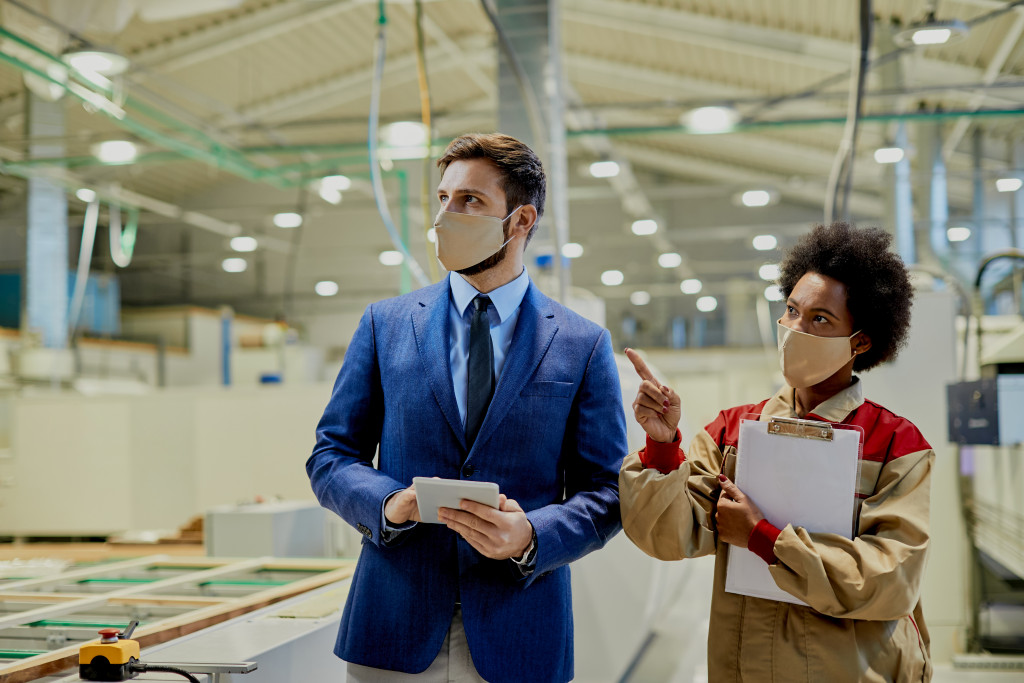• Technology is transforming industrial processes around the world, making it easier for businesses to reduce costs and enhance their operations.
• Sensor-based monitoring enables companies to track liquid or bulk levels, temperature and pressure, and vibration in real time.
• Robotics and automation can increase productivity and reduce labor costs.
• AI-powered predictive analytics helps with inventory management, machine performance, and quality control.
• Augmented Reality (AR) provides a more immersive and engaging way to train employees as well as create unique customer experiences.
Technology is transforming industrial processes around the world. Companies in all sectors, from manufacturing to retail, are leveraging innovative technologies to increase efficiency, reduce costs, and improve customer experiences. Here’s a look at some of the ways technology is revolutionizing the industry today.
Sensor-based Monitoring
One of the most prominent ways technology is transforming industrial processes around the world is through sensor-based monitoring. With today’s sophisticated sensors, manufacturers can monitor their production and operations in real time, enabling them to identify bottlenecks and increase efficiency. Here are some factors that are now easier to monitor:
Liquid or Bulk Level
Companies can use high-quality level switches to monitor liquid or bulk levels of materials. This is especially useful for hazardous materials, as it can help prevent spills or other accidents. It can also be used in food manufacturing as well as chemical, oil, and gas industries.
Temperature and Pressure
Monitoring temperature and pressure is an essential part of many industrial processes. By using advanced sensors, companies can quickly identify potential issues before they cause any significant damage. This helps improve safety and reduce costs associated with repairs or replacements.
Vibration Analysis
Vibration analysis is a useful tool for identifying potential mechanical defects in machines or processes. By monitoring the vibration of equipment, companies can quickly identify any areas that need attention and make adjustments to ensure proper operation. This helps improve reliability and reduce downtime.

Robotics and Automation
Robots are becoming increasingly prevalent in industrial settings. From welding and painting to material handling and packaging operations, robots are being used to automate tasks that were once performed manually by humans.
Not only do robots save time and money by increasing productivity and reducing labor costs, but they can also produce higher-quality results with greater accuracy than human workers. This is because robots are not subject to fatigue, boredom, or any other natural human weaknesses.
Robotics and automation also help create a safer work environment for staff. By minimizing the need for manual labor, robots can help prevent workplace injuries by reducing exposure to potentially dangerous tasks.
AI-Powered Predictive Analytics
Artificial intelligence (AI) has become invaluable for predictive analytics in industrial settings. AI-powered algorithms can quickly analyze vast amounts of data to predict future outcomes or identify potential problems before they occur. Here are some areas where AI can be applied:
Inventory Management
AI can help companies better manage inventory by predicting demand and automatically adjusting production or stocking levels accordingly. For starters, AI can predict customer trends and help companies adjust operations to meet demand.
Machine Performance
AI can also be used to monitor the performance of machines or processes. By analyzing data from sensors, AI can quickly identify potential issues before they become major problems that require expensive repairs or replacements.
Quality Control
AI can also be used for quality control, as it can quickly identify any defects or inconsistencies in products. This helps companies ensure high-quality standards and reduce the costs associated with defective products.

Augmented Reality (AR)
AR technology is transforming how industries operate on the shop floor as well as how they communicate with their customers. For example, AR-powered glasses can display real-time data about a product or process directly in the user’s field of vision.
This enables them to make faster decisions based on more accurate information. Additionally, AR allows companies to create immersive customer experiences that help them stand out from the competition.
Businesses can also use AR for employee training, as it can provide a more engaging and effective way to teach new skills or processes. Its interactive and immersive nature can help employees learn faster and retain information longer.
Technology is playing a key role in shaping industrial processes around the world today. From robotics and automation to AI-powered predictive analytics and augmented reality (AR), businesses have access to a wide range of tools that enable them to streamline operations, reduce costs, and enhance customer experiences—leading to increased profitability in the long run. With technological innovations advancing every day, it’s never been easier for businesses of all sizes and industries to leverage these powerful tools for their own benefit.
